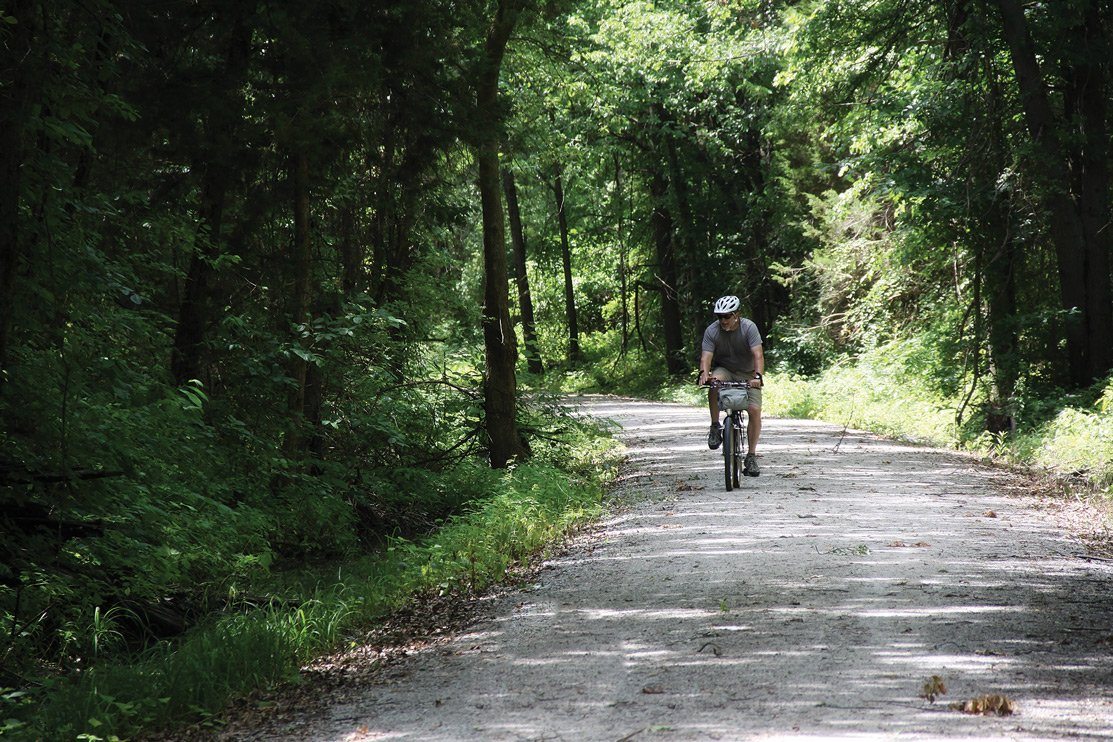When the Missouri River flooded in the spring of 1986, anyone standing in Maurice and Jayne Glosemeyer’s barn in rural Warren County would have been underwater. The damages to the the nearby Missouri-Kansas-Texas Railroad (MKT), which divided their house from their hog operation, were so severe that the company pulled up its tracks.
The railroad’s decline was no surprise to the Glosemeyers or their neighbors. For years, service had been slowing anyway. And the farmers, many of whose families had owned land in the region since the 1800s, had witnessed plenty of change come and go in the valley.
A century earlier, the railroad’s arrival brought the welcome promise of wealth and supply lines for area farmers. Train corridors across the country formed in a variety of ways—by direct purchase, federal land grants, or via easements from individual landowners. When the railroad began assembling its path across Missouri in the 1890s, it paid affected property owners for the easement access, but the land beneath was never owned by the railroad. The specific terms of the easement granted the corridor “for a railroad, and for no other purposes.”
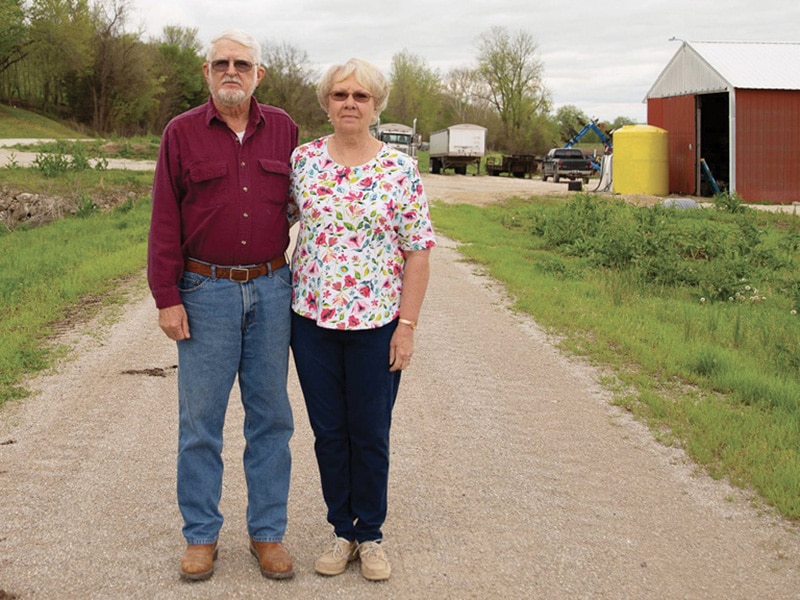
“We felt it was written in stone that once the railroad company abandoned that, it was ours,” says Jayne.
So it came as a surprise when a neighbor shared a newspaper clipping that detailed the state’s planned conversion of the railroad into a public hiking and biking trail.
The Glosemeyers were stunned. It couldn’t be true. Could the government really do such a thing—just seize land—without first notifying the property owners, or even paying for it?
“This wasn’t even an eminent domain thing,” Jayne recalls. “Eminent domain at least makes sure you get compensated. When something like a highway comes through, they have to purchase [the land]. They can’t ignore that you exist and steal your property.”
Unbeknownst to them, three years earlier Congress had passed rail-banking amendments under the National Trails Systems Act to “preserve established railroad corridors for interim trail and future trail use.” Trail activists across the nation began using this new legislation to create recreational paths.
“The sad thing with this whole affair was that the majority of the landowners along the Katy Trail, had they been approached and asked, ‘Will you sell us your property?’ they probably would have done so,” Jayne says. “But to be treated so that you have to read about it first in the sports section? That’s low.”
They weren’t alone in their anger. Armed with a 97-year-old railroad easement contract and the backing of the Missouri Farm Bureau, the Glosemeyers led the legal fight in a decade-long class action lawsuit asserting the violation of Fifth Amendment rights that affected more than 1,100 fellow property owners. They received hate mail and anonymous phone calls. Maurice woke up one morning to find the tires on his tractor slashed. Though the Supreme Court eventually upheld the government’s stance on railbanking, in 2000 the Court of Federal Claims acknowledged that the taking of property for public use without compensation was illegal. For the landowners, it was a win.
But the verdict was ten years too late. In 1990, a crowd of more than 1,000 people celebrated the official opening of the first segment of the Katy Trail. At 240-miles long, the Katy Trail is the longest rail-trail path in the nation and beloved by thousands, much to the credit of public relations efforts to brand the trail and the surrounding Missouri River Valley region. It’s a narrative of success that has energized a push for the Rock Island Trail (MORIT), which proposes to rail-bank 144 miles of the Ameren line, connecting St. Louis, Kansas City, and the Katy in a 450-mile loop.
Despite overwhelming support from the general public and rural business owners who stand to gain from the trail, MORIT faces resistance from some rural landowners similar to that of the Katy. There are questions about compensation, potential effects on agricultural operations, and the taxpayer cost of the trail. MORIT activists point to the success of the Katy to alleviate those concerns. But that’s only half the story.
“You hear proponents saying that the trail has not been as onerous to the property owners as they feared it would be. But they ignore the legal aspect. They just say, ‘There’s a federal law that allowed us to do it,’ ” says Estil Fretwell, a former state legislator who was also the Director of Public Affairs for the Missouri Farm Bureau. “Landowners were so frustrated and so upset that the proponents never acknowledged their legal arguments. It’s interesting. They’re still emotional about it.”
The Katy Trail has been around for more than 30 years. What lessons, if any, can be gleaned by revisiting the past?
“I still have feelings. We should’ve had a different outcome than what it was,” says Gary Heldt, a landowner who owns 62-acres of farmland along the Katy Trail outside of Rhineland.
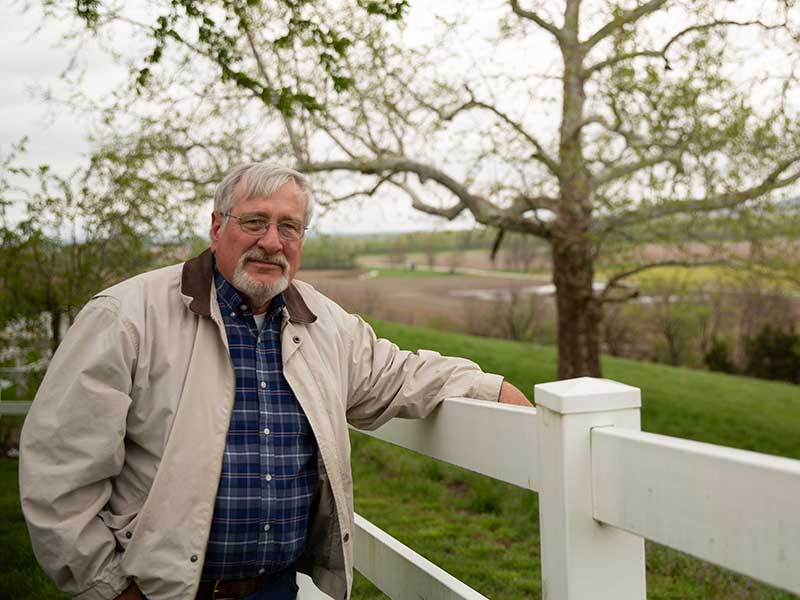
Gary Heldt was the major organizer involved in rallying farmers to sign onto the Glosemeyer suit. Photo by Rose Hansen.
The stretch between Rhineland and Marthasville formed the hotbed of dissent against the recreation trail. The Glosemeyers were named in the lawsuit, but Heldt was the person responsible for organizing affected landowners to take action. When the MKT first abandoned the corridor, he was running the grain elevator in Rhineland, and the railroad was a vital part of the business.
“I had a lot of concerned customers,” he recalls. “It was just a simple easement granted for railroad purposes only. They felt the ground should revert back to them. It was a different use, turning the property from a railroad bed to a hiking and biking trail. We weren’t against hikers or bicycles or what have you. Our emphasis was the fact that the property was going to be utilized in a different manner than it was originally deeded. The details of the easement specifically stipulate that it could not be used for anything other than a railroad.”
Legally, the purpose of the rail-banking claim used to create the Katy Trail is to preserve corridors for the potential reactivation of a future transportation line. Theoretically, a high-speed train could someday reclaim the Katy for its own use. However, the reactivation of these corridors has rarely, if ever, occurred.
Two decades before Congress amended the National Trails System Act to employ rail-banking, rail-trail conversions were already happening. The first rail-trail opened was the Elroy-Sparta State Trail in 1967 in Wisconsin. More followed in Iowa, Illinois, and again in Wisconsin. But after Congress amended the National Trails System Act to employ rail-banking, Missouri became the first state to formally test the new law with the proposal for the Katy Trail, backed by a powerful Missourian named Edward “Ted” Jones. His father had started a brokerage firm in downtown St. Louis, but Ted preferred working in small towns, offering financial guidance to citizens across rural Missouri. He liked country life so much, in fact, that he bought a 711-acre farm in Callaway County. (His widow, Pat Jones, eventually donated the land to the state in 1997, forming the Prairie Fork Conservation Area.)
“Ted wanted to provide a way for other people, who weren’t as fortunate as he was to have his own farm, to experience rural Missouri,” says Dan Burkhardt, a retired partner of Edward Jones. In 2010, he and his wife Connie founded the Katy Trail Land Trust. “Fortunately, the Katy Railroad was abandoning its right of way. They were going out of business. Ted said, ‘I’m going to take their right-of-way and turn it into a biking trail.’ This was a very radical idea. It had never been done in Missouri, never to this extent.”
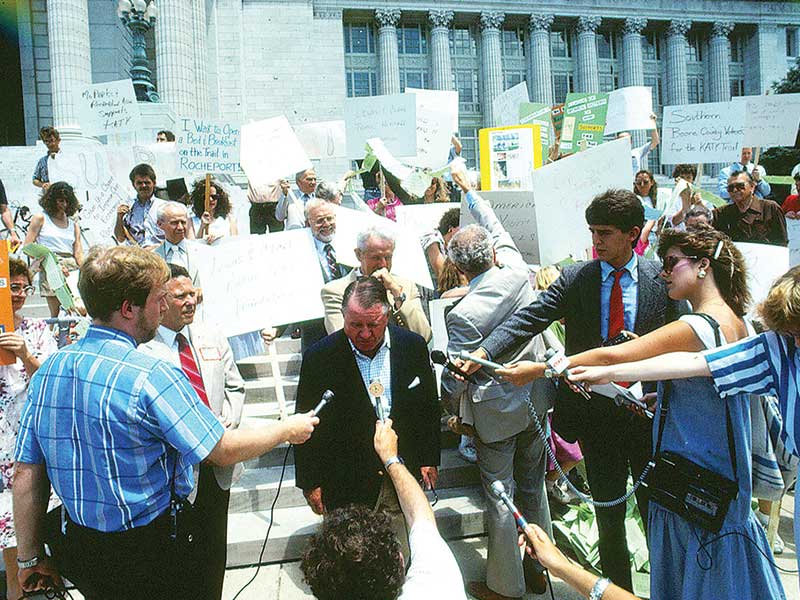
Jones donated $200,000 to the Conservation Federation of Missouri Charitable Trust, and the money was used to acquire the easements from the railroad company under the Trails System Act. Later, he donated another $2 million to aid with trail construction between Sedalia and Machens.
“It was for the greater good. This was a once in a lifetime opportunity to create something that was never possible to replicate again. He took all the negative feedback, paid for all this out of his own pocket,” says Burkhardt. “It was extremely difficult and complicated. Landowners whose properties the right-of-way passed through did not want it turned into a trail. They vigorously objected to it. Ultimately, our governor, John Ashcroft, sided with Ted.”
The number of rail-trails has grown dramatically since 1986. According to the Rails to Trails Conservancy, which includes more than 160,000 members and supporters, some 23,000 miles of abandoned railroad corridors have been converted into recreational trails across the United States.
In the year 2013 alone, the government paid $49 million in compensation claims to property owners affected by rail-trail conversions. Landowners, of course, see themselves as pragmatic underdogs outnumbered by distant, powerful interests.
“The publicity they generated, they tried to paint us in a situation like we were a bunch of redneck farmers out here who didn’t know what we were doing or how to manage our own property,” Heldt recalls.
“The Katy Trail landowners who stood up for their property rights are heroes,” says Fretwell. “This was obviously something that had popularity with the public. Why not build a trail? Why not let the public come along and use this property? And yet the Katy landowners were saying, ‘Yes, but this is my property. You’re taking my property.’ ”
The protests did little to sway trail proponents, a dynamic that still persists today. When the railroad first negotiated easements with Missouri River Valley farmers, one third of the nation’s population lived on farms. Today, less than one percent does. Empathizing with property owners is difficult if you don’t own land, if that land hasn’t been in your family for generations, if you aren’t rural, if you live in an apartment, in a city, far, far away.
By Jayne’s calculations, the amount of her property traversed by the Katy Trail totaled 12 acres. The estimate includes the trail and the right of way on both sides for a combined width of 100 feet. “A lot of the people who use this trail, they don’t even own an acre. But they were perfectly happy for me to lose 12 so they could have a place to ride their bicycle,” Jayne says.
Her protests continue to fall on deaf ears. A more apt comparison might be to consider how trail proponents might feel if they’d rented a room out in their own houses on a month-by-month basis only to be told by the government that the room would be used for another purpose, seized without payment, and never returned. Oh, and by the way, you still have to pay taxes on the seized property.
The proposed Rock Island Trail would connect to the Katy to form a 450-mile loop through Missouri. The route would showcase the best of Missouri’s natural landscapes—not just pristine prairie and picturesque farmland, but the wrinkled terrain of the Ozark Mountains, too. At one end is St Louis. And in the west, these trails would meet in Windsor, where one portion of the Rock Island Trail is already open. Lifetime resident Mike Mothersbaugh owns 18 acres along the Katy Trail, and lives less than a mile from its intersection with the Rock Island Trail. “The people on the Katy took the black eye. At the time the Katy Trail started to become the trail, I was an opinion writer in the local newspaper and also a landowner along the trail. The process and the public relations surrounding the whole startup left me raw. I disagreed with it greatly. And that really hasn’t changed,” he says. “What has changed for me is acceptance. It needs to be utilized because it’s here. It has become part of our character, part of [Windsor’s] local economy. It’s very evident that it is prospering, growing. If it grows, we do, too.” Mothersbaugh was never compensated for the state’s use of his land. He chose not to join the lawsuit, and only the people who did participate were eligible for the payout.
His is the kind of change-of-heart testimony, however mild, that trail proponents want to hear and use whenever possible. As Dan Burkhardt puts it, “The more we act like things are getting behind us regarding the hurt feelings of 30 years ago, the more they will get behind us.”
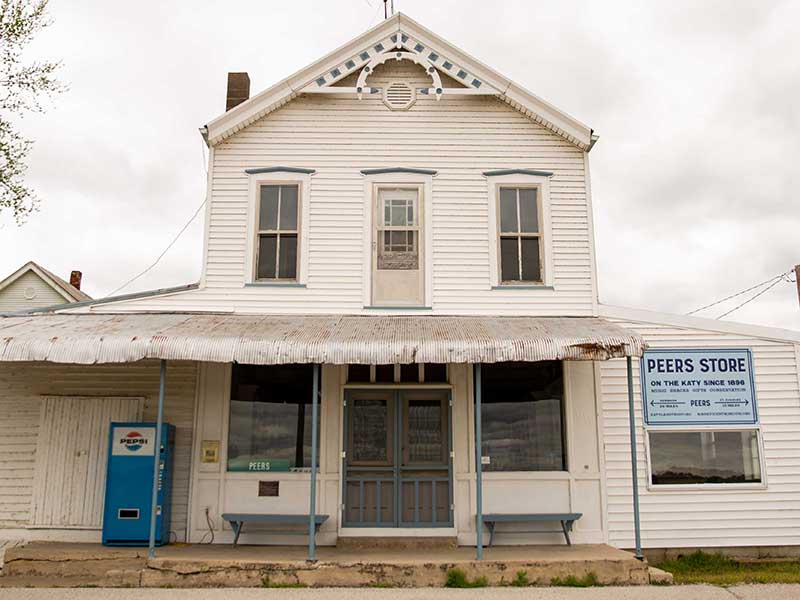
From a public relations perspective, it’s much easier to focus a trail’s concrete effects on agricultural operations or property management issues, which were at the heart of the secondary opposition to the Katy and also to Rock Island.
“I’ll walk into meetings with 200 or more disgruntled landowners and then just raise my hand and say, ‘Of course there was this feeling, too, when the Katy came through Windsor,’ ” says Kim Henderson, owner of Kim’s Cabins in Windsor. “But I can tell you for a fact now that most people are not there to camp in your barn and burn it down or pick your morel mushrooms or bother your cattle. They’re here to spend their dollars. They’re coming from all over the country and the world, and that all goes back to our communities and the state.”
For trail proponents, this seems like the perfect response. And yet resistance to Rock Island persists. Its making would also require crossing more than 1,000 agricultural operations. Landowners along the Rock Island Trail cite many of the same concerns Katy Trail landowners cited—agricultural biohazards, increased traffic around sensitive and volatile farm chemicals, crime.
To nonfarmers, the solutions seem simple. Put up signs. Build a fence. Relocate, or better yet, change your farming operation. But those things aren’t free. Someone has to pay for them. Agricultural fencing alone can cost up to $10,000 a mile. Who would pay for its installation? For its maintenance? The farmer? The taxpayers?
To Burkhardt, the making of the Katy Trail was the result of perfect timing and perfect, powerful interests. The times have changed. In this political climate, the landowners might win. But this time around, they probably won’t have to take their case to the Supreme Court. The precedent for payment was set by the Glosemeyers 30 years ago.
“If someone owns the land under the railroad easement and a rail-trail comes along, the owners are entitled to federal compensation. That’s a Fifth Amendment entitlement. The government can’t just take your land without compensating you,” says Greg Harris, executive director of MORIT. But because this transaction is not eminent domain, the compensation is not automatic. Landowners must file a claim against the federal government, like the one spearheaded by Meghan Largent of Lewis Rice legal council in St. Louis, which represents MORIT-affected landowners, to receive fair market value compensation.
In the Glosemeyer case, the court ruled that “recreational hiking, jogging, and cycling are not connected with railroad use in any meaningful way,” and that, given that the easement of the Glosemeyer’s property was exclusively for railroad purposes, “When the railroads ceased operations, [the Glosemeyers] would own the land free of any easements. Those expectations have been thwarted … solely because of the operation of the Rails-to-Trails Act.”
The Act wasn’t stripped from the books, but it was still satisfying for the Glosemeyers to have their principles validated by the same government who had wronged them. In the United States, property rights are protected by the Bill of Rights, and yet sometimes those rights don’t hold. At best, the government makes reparations. It’s a way of apologizing, of acknowledging that the ends don’t necessarily justify the means, even in the interests of the greater good.
Their day in court ended with a final admission from Justice Holmes: “A strong public desire to improve the public condition is not enough to warrant achieving the desire by a shorter cut than the constitutional way of paying for the change.”
Land battle narratives are as old as the United States. One only has to remember the displacement of American Indians. Later, as settlers journeyed westward and resources like timber, water, and minerals were snatched up and sometimes irreversibly depleted, national leaders began calling for limits—but not without criticism. The first national park in the world, Yellowstone, was created by Ulysses S. Grant in 1872, and the Helena Gazette called it “a great blow to the prosperity” of the region. When Teddy Roosevelt proposed protecting the Grand Canyon, opponents in nearby Williams, Arizona, described “a fiendish and diabolical scheme.”
It’s a heritage that makes Dan Burkhardt chuckle. Just like Yellowstone and the Grand Canyon, he says, the Katy Trail “was for the greater good.”
Trail proponents often point to the economic opportunities of the trail. One quick internet search reveals plenty of trail-centric businesses—bike tourism operators, trailside
cafes, and trailside bed and breakfasts. Sometimes, these businesses are on the same land previously disputed by trail opponents.
Carl Lensing of Bluffton, for example, was an outspoken opponent of the Katy Trail and likely remained bitter about the ordeal until his death. But that anger doesn’t stretch beyond the grave. His son and daughter-in-law, Brian and Melissa, inherited the property. They plan to build a bed and breakfast for trail-bound clients.
“We just accept that the trail is part of the story,” Melissa says. She already has the décor picked out—the living room will be train-themed. Outside, she wants the business to feel welcoming to cyclists. “The bikers are probably going to be our best customers because [the trail] is literally in our front yard.”
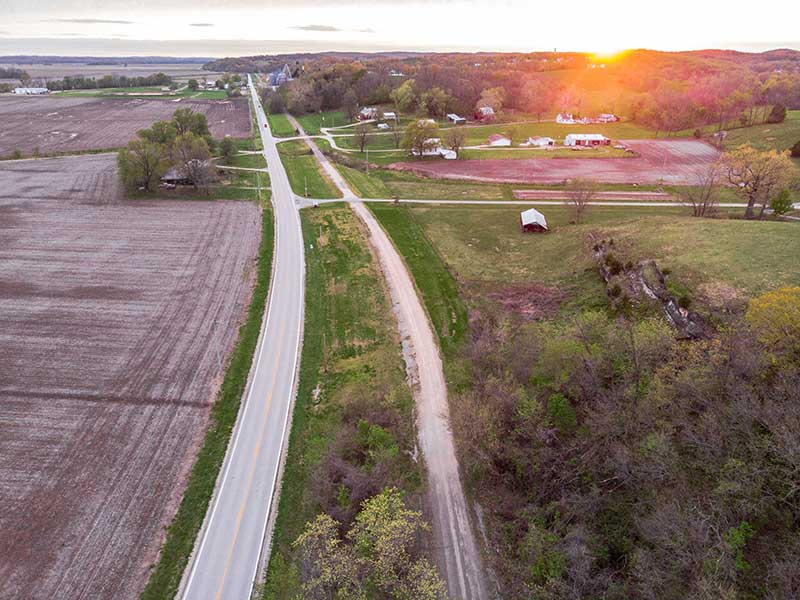
Capturing economic opportunities that the Katy Trail offers is at the forefront of Melissa’s mind. She’s also the Executive Director of the Hermann Chamber of Commerce, and she wants to make the city more
bicycle-friendly. “I do know this: biking tourism is one of the fastest-growing tourism sources out there right now,” she says. “I think we’ve got to find ways to improve, to be a little bit more biker-friendly. We don’t even have bike stands.”
Across the river in Rhineland, lifetime resident Katie Muenks has added another business to her roster: The Corner. She also owns the iconic bed and breakfast, Shining Hope, housed in a pre-Civil War log cabin whose sprawling front lawn ends at the Katy Trail.
Trail-dependent businesses span the state from end to end. In Windsor, Kim Henderson credits the trail for launching her business. “The trails are why I put the cabins in,” she says, though she doesn’t track what percentage of clientele are trail-users. “I’m sure it’s over 50 percent. I get a lot of people. We could only sleep 17 people in Windsor when I first put a cabin in. We can now sleep over 75 people. Even on some weeknights, you can’t find a bed in Windsor.”
Perhaps no city along the Katy has seen as much economic revival as Rocheport. With its wineries, antique stores, and scenic perch on the Missouri River, the town often appears on Best Small Town lists in publications like Southern Living and The Kansas City Star. Conrad Yates, a longtime alderman who also runs a bed and breakfast, has actively aided the restoration of its historical downtown for the last 30 years. But to credit Rocheport’s recovery solely to the Katy Trail, he says, is an oversimplification.
“In the beginning, there was the general perception that every single town along the Katy Trail would be saved, that it would restore [the] economy to those small whistlestops and allow something to rise up and become successful commercially,” he says. “People assume most of Rocheport’s business comes from the Katy Trail, but it doesn’t. We have the great blessing of being on, possibly, the most beautiful section of the Katy Trail, and we’re close to Interstate 70. So that gives us quick access from a whole lot of different populations of people. And Rocheport was named by the Kansas City Star as a favorite day trip.” Yates says. “The town of Rocheport itself is primarily based on tourism. The Katy Trail was at the root. It played a role, but there wasn’t any single thing which would be entirely responsible for that rebirth. It was the fortunate intersection of many contributing factors.”
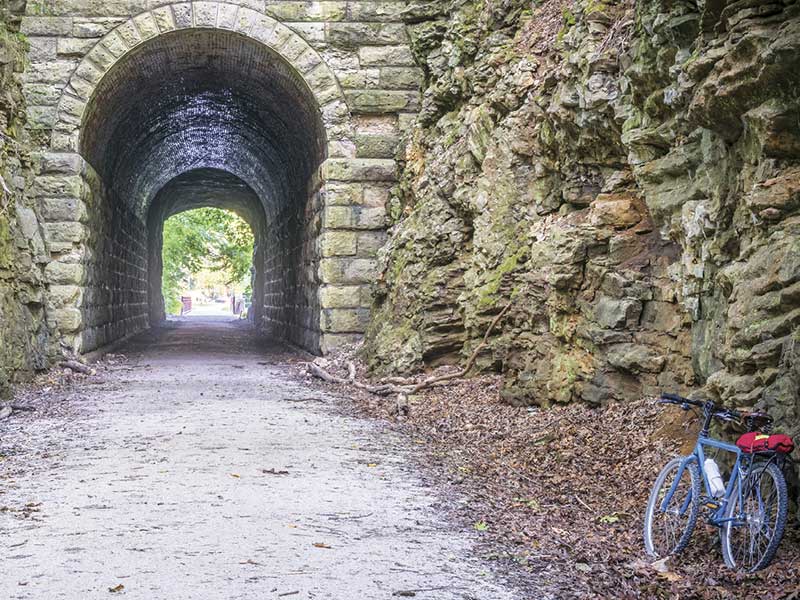
In Missouri, public lands compose less than 10 percent of the state. But acre-by-acre, it’s increasing. Rural areas suffer steady population decline, and urban centers continue to grow. Can the people of Missouri accept a new culture that, for better and for worse, chips away the old one? So many of the farmers involved in the original battle against the Katy Trail have passed away, and with them, their stories and all those hard feelings. The feelings may be forgotten in a matter of generations. Perhaps sooner.
Whenever a cyclist knocks on Jayne Glosemeyer’s front door to ask for a ride into town or for tools to make repairs, she politely complies. In the country, people help each other. That’s just how she was raised, but she also uses the opportunity to share her side of the story. “A lot of them say, ‘We didn’t know that!’ But they’re so happy to have a trail.” Even now, all these years later, her voice still trembles when she talks about it.
To Jayne, the persistent problem with the Katy Trail isn’t the trail or its users, but in the predominant narrative of its triumph and the willful ignorance of its costs. There were political, intellectual, and Constitutional compromises made in order for the Katy Trail to exist as it’s known today. These are inconvenient truths for the pro-trail sects and their blissful beneficiaries. To the Glosemeyers, it’s just proof that we live in a nation shaped by theft and half-hearted reparations. They aren’t the first to feel this way. Certainly, the Native Americans of the Missouri River Valley would agree with that sentiment, too.
Maurice swears that their children have been instilled with a proper sense of history about what their parents fought for along the Katy Trail. Will the generation after that inherit those same resentments and values? It’s hard to say.
The Katy Trail is among Missouri’s most popular state parks. The Department of Natural Resources estimates that over 400,000 visitors use it every year, generating some $18.5 million in revenue. With any luck, the Lensing’s bed and breakfast will be open in time to earn a share of that business. Katie Muenks hopes cyclists will stop at The Corner for a Reuben and a piece of pie. The Glosemeyers can see the Katy Trail from their house; it still divides their property. It’s a good vantage point for keeping an eye on their grandchildren, who set up a stand and sell lemonade to passersby on the Katy during the summer.
Related Posts
Inside the Newest Cafe & Bike Shop on the Katy Trail
Closely nuzzled against the Katy Trail in Rocheport, Meriwether Café & Bike Shop provides a quietly colorful experience. Managers Brandon and Whitney Vair transformed the building that used to house the Trailside Café into a bright spot set against the green-covered hills of Rocheport.
The Rock Island Trail Connects KC to the Katy
The Rock Island Trail, connecting the greater Kansas City area to Missouri’s Katy Trail system, is an experience to savor whether you are walking, cycling, or on horseback.



